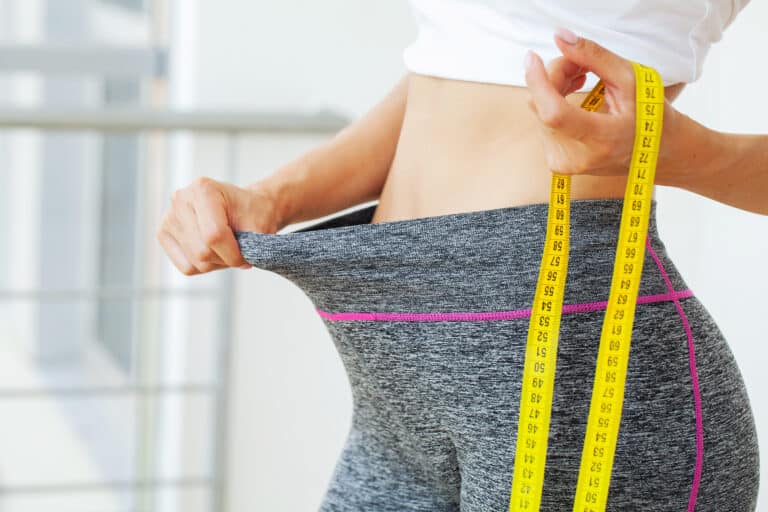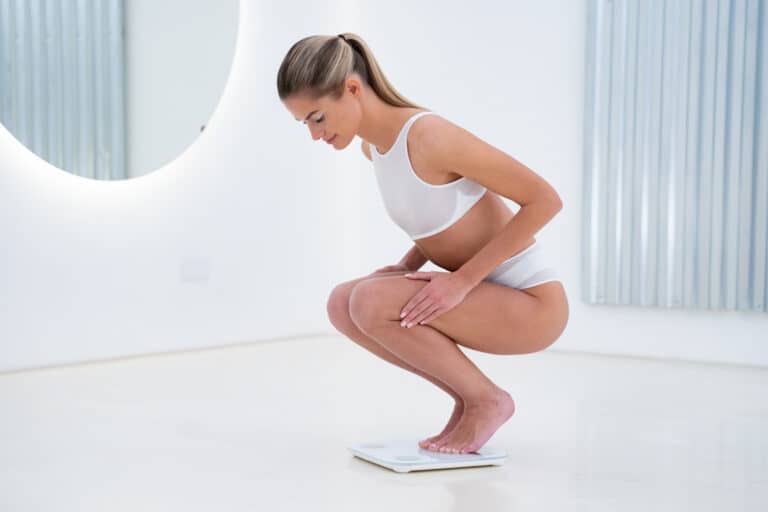The Ultimate Guide to the Keto Diet for Rapid Weight Loss
As someone who has struggled with weight loss and maintaining a healthy diet for years, I can tell you firsthand that it can be a frustrating and overwhelming journey. But when I discovered the Keto diet, everything changed. I was finally able to see real results and feel like I was making progress towards my health goals.
The Keto diet is not just another fad diet; it’s a lifestyle change that has the potential to transform your body and your health. By following this high-fat, moderate-protein, and low-carbohydrate diet, you can enter a state of ketosis and burn fat for energy instead of glucose.
But like any lifestyle change, starting a Keto diet can be intimidating. That’s why I’ve created this ultimate guide to the Keto diet. Whether you’re a beginner or a seasoned Keto veteran, this guide will provide you with all the information you need to succeed on your Keto journey.
From the science behind the Keto diet to meal planning and potential side effects, I’ve got you covered. So if you’re ready to transform your body and your health, let’s dive into the ultimate guide to the Keto diet.

What Is The Keto diet
When you follow a Keto diet, your body enters a state called ketosis. This means that your liver produces ketones from the breakdown of fat, which become the primary source of fuel for your body. This is different from a traditional diet, where your body relies on glucose from carbohydrates for energy.
The Keto diet typically involves reducing your carbohydrate intake to less than 50 grams per day, or around 5-10% of your daily calorie intake. This can vary based on factors like your age, gender, weight, and activity level. The majority of your calories on a Keto diet should come from fat, around 70-75%, with the remaining calories coming from protein.
By following a Keto diet, you can achieve a variety of health benefits. For example, the Keto diet may help you lose weight by reducing your appetite and increasing fat burning. It may also improve blood sugar control, reduce inflammation, and improve mental clarity.
It’s important to note that the Keto diet is not suitable for everyone. People with certain health conditions, such as pancreatic disease or liver conditions, may not be able to safely follow a Keto diet. Additionally, it’s important to speak with Dr. Nancie and Dr. Alphonso before starting a Keto diet, especially if you are pregnant or breastfeeding.
History of Keto diet
The history of the Keto diet can be traced back to the 1920s when it was developed as a treatment for epilepsy. Doctors noticed that fasting could reduce seizures in epileptic patients, and they wanted to find a way to replicate this effect without the need for fasting.
Researchers found that a high-fat, low-carbohydrate diet could mimic the effects of fasting and help reduce seizures in epileptic patients. This diet, known as the ketogenic diet, was named after ketones, which are produced when the body breaks down fat for energy.
The Keto diet became a popular treatment for epilepsy in the 1930s and 1940s, but it fell out of favor with the introduction of anticonvulsant drugs in the 1950s. However, the Keto diet continued to be used in some cases where anticonvulsant drugs were ineffective.
In recent years, the Keto diet has gained popularity as a weight loss tool and a way to improve overall health. The diet’s effectiveness in reducing appetite and increasing fat burning has made it a popular choice for people looking to lose weight.
Research has also shown that the Keto diet may have other potential health benefits. For example, some studies have found that the Keto diet may improve blood sugar control, reduce inflammation, and improve heart health.
How The Keto Diet Works
Ketosis
Ketosis is a metabolic state in which your body produces ketones from fat instead of glucose from carbohydrates to use as its primary source of fuel. This state is achieved when you follow a Keto diet, which involves drastically reducing your carbohydrate intake and increasing your fat intake.
When your body enters ketosis, it starts to break down fat for energy instead of carbohydrates. This process results in the production of ketones, which are used by your body for energy. This shift in energy source can have a variety of effects on your body, including increased fat burning and reduced appetite.
One of the primary benefits of ketosis is increased fat burning. When your body is in ketosis, it is constantly burning fat for energy, which can help you lose weight and reduce body fat. Additionally, ketosis may help improve blood sugar control and reduce inflammation.
However, it’s important to note that ketosis can also have some potential side effects. For example, some people may experience the “Keto flu” when they first start a Keto diet, which can include symptoms like headaches, fatigue, and irritability. Dehydration and nutrient deficiencies can also be a concern, so it’s important to drink plenty of water and consume a variety of nutrient-dense foods.
Carbohydrates and Insulin
Carbohydrates are an essential macronutrient that provide energy to the body. When you consume carbohydrates, they are broken down into glucose, which enters the bloodstream and raises blood sugar levels. In response, the pancreas releases insulin, a hormone that helps regulate blood sugar levels by signaling cells to absorb glucose from the bloodstream.
Insulin also has another function in the body – it signals your body to store fat. When insulin levels are high, your body is in a “storage” mode, where it is more likely to store excess calories as fat instead of burning them for energy. This is why a diet high in carbohydrates can contribute to weight gain and fat accumulation.
By reducing carbohydrate intake, you can lower insulin levels and encourage your body to burn fat for energy. This is the principle behind the Keto diet – by reducing carbohydrate intake and increasing fat intake, your body is forced to switch from burning glucose for energy to burning fat for energy.
Lowering insulin levels can also have other potential health benefits. For example, it may help improve blood sugar control and reduce the risk of developing insulin resistance, a condition in which cells become less responsive to insulin and blood sugar levels remain elevated.
Benefits of Keto diet
Some of the potential benefits of following a Keto diet include:
- Weight loss
- Improved blood sugar control
- Reduced inflammation
- Increased energy levels
- Improved mental clarity
- Lowered blood pressure and cholesterol levels
Foods to Eat on a Keto Diet
High-fat foods
Healthy fats should make up the majority of your calorie intake on a Keto diet. Some examples of high-fat foods include:
- Avocado
- Nuts and seeds
- Olive oil
- Coconut oil
- Butter and ghee
- Fatty fish
Protein-rich foods
Protein is an essential macronutrient that helps build and repair tissues in the body. Some examples of protein-rich foods that are allowed on a Keto diet include:
- Meat (beef, chicken, pork, etc.)
- Seafood
- Eggs
- Cheese
Low-carb vegetables
Low-carb vegetables are also an important part of a Keto diet, as they provide fiber and important micronutrients without contributing too many carbohydrates. Some examples of low-carb vegetables that are allowed on a Keto diet include:
- Leafy greens (spinach, kale, lettuce, etc.)
- Cruciferous vegetables (broccoli, cauliflower, Brussels sprouts, etc.)
- Bell peppers
- Zucchini
- Tomatoes
Foods to Avoid on a Keto Diet
High-carb foods
Foods that are high in carbohydrates should be avoided on a Keto diet. These include:
- Grains (wheat, rice, oats, etc.)
- Sugar (sweets, soda, candy, etc.)
- Starchy vegetables (potatoes, corn, peas, etc.)
- Fruits (bananas, apples, oranges, etc.)
Processed foods
Processed foods should also be avoided on a Keto diet, as they often contain added sugars and unhealthy fats. Some examples of processed foods to avoid include:
- Chips
- Crackers
- Cookies
- Fast food
- Frozen meals
Sugary foods
Sugary foods should be avoided on a Keto diet, as they can quickly derail your efforts to enter ketosis. Some examples of sugary foods to avoid include:
- Desserts (cakes, pies, ice cream, etc.)
- Candy
- Soda
- Sweetened coffee drinks
- Fruit juice
Meal Planning on a Keto Diet
Planning your meals
Meal planning is an important part of a successful Keto diet. To plan your meals, you’ll want to focus on high-fat, moderate-protein, and low-carbohydrate foods. Some examples of Keto-friendly meals include:
- Scrambled eggs with bacon and avocado
- Grilled chicken with roasted broccoli and cauliflower
- Steak with sautéed mushrooms and asparagus
Preparing your meals
Preparing your meals in advance can help you stick to your Keto diet and avoid the temptation to eat unhealthy foods. Some tips for preparing your meals on a Keto diet include:
- Meal prepping on the weekends
- Cooking in bulk and freezing leftovers
- Using a slow cooker or Instant Pot for easy meals
Snacking on a Keto diet
Snacking is allowed on a Keto diet, but it’s important to choose low-carb, high-fat snacks. Some examples of Keto-friendly snacks include:
- Hard-boiled eggs
- Cheese sticks
- Nuts and seeds
- Avocado
- Beef jerky
Potential Side Effects of a Keto Diet
Keto flu
When starting a Keto diet, many people experience what is commonly referred to as the “Keto flu.” This is a collection of symptoms that can include headaches, fatigue, dizziness, irritability, and nausea. These symptoms can be caused by the changes your body is going through as it adjusts to the new way of eating.
The Keto flu is a temporary phenomenon, and most people find that their symptoms subside within a few days to a week. During this time, it’s important to stay hydrated, get plenty of rest, and consume enough electrolytes like sodium, potassium, and magnesium.
One of the primary causes of the Keto flu is the sudden decrease in carbohydrate intake. When you reduce your carbohydrate intake, your body starts to burn fat for energy instead of glucose. This process can cause a shift in electrolyte balance, which can lead to dehydration and the symptoms of the Keto flu.
To minimize the symptoms of the Keto flu, it’s important to ease into the Keto diet gradually. This can involve gradually reducing your carbohydrate intake over a few weeks instead of cutting them out completely. Additionally, consuming enough electrolytes, drinking plenty of water, and getting enough rest can help alleviate symptoms.
Dehydration
Dehydration can be a potential side effect of following a Keto diet. When you’re in ketosis, your body excretes more water through urine, which can lead to dehydration if you don’t consume enough fluids.
To prevent dehydration, it’s important to drink plenty of water throughout the day. The general recommendation is to consume at least 8 cups (64 ounces) of water per day, but this may vary based on factors like age, gender, weight, and activity level. Additionally, consuming electrolytes like sodium, potassium, and magnesium can help maintain hydration levels.
It’s also important to listen to your body and consume fluids when you feel thirsty. Thirst is a sign that your body needs more fluids, and it’s important to replenish fluids as soon as possible to prevent dehydration.
Symptoms of dehydration can include thirst, dry mouth, fatigue, headache, dizziness, and dark urine. If you experience any of these symptoms, it’s important to consume fluids immediately and seek medical attention if the symptoms persist.
Nutrient deficiencies
While the Keto diet can provide a variety of health benefits, it can also be low in certain nutrients. For example, because the diet restricts carbohydrate intake, it can be low in fiber, which is important for digestive health. Additionally, the Keto diet can be low in some vitamins and minerals, such as vitamin C, potassium, and magnesium.
To prevent nutrient deficiencies, it’s important to eat a variety of foods while following a Keto diet. This can include consuming non-starchy vegetables like broccoli, cauliflower, and spinach, which are low in carbohydrates but high in fiber and other nutrients. Additionally, consuming protein sources like meat, fish, and eggs can provide important vitamins and minerals.
Taking a multivitamin can also be helpful to ensure you’re getting all the nutrients your body needs. However, it’s important to choose a high-quality multivitamin that is specifically formulated for the Keto diet, as some multivitamins may contain high amounts of carbohydrates.
Who Should Try a Keto Diet?
People with certain health conditions
While the Keto diet may not be suitable for everyone, it can be beneficial for people with certain health conditions. For example, the Keto diet was initially developed as a treatment for epilepsy and has been shown to be effective in reducing seizures in some people, particularly children.
The Keto diet may also be beneficial for people with type 2 diabetes. This is because the diet can help improve blood sugar control by reducing carbohydrate intake and increasing fat intake. Research has shown that the Keto diet may be effective in reducing blood sugar levels and improving insulin sensitivity, which can help manage the symptoms of type 2 diabetes.
In addition, the Keto diet may be helpful for women with polycystic ovary syndrome (PCOS). PCOS is a hormonal disorder that can cause a variety of symptoms, including irregular periods, weight gain, and acne. Research has shown that the Keto diet may help improve insulin sensitivity and hormone levels in women with PCOS, leading to improvements in symptoms.
However, it’s important to note that the Keto diet may not be suitable for everyone with these health conditions. It’s important to speak with Dr. Nancie and Dr. Alphonso before starting a Keto diet, especially if you have any preexisting health conditions.
Athletes and fitness enthusiasts
It’s not just people with health conditions who may benefit from a Keto diet. Some athletes and fitness enthusiasts have also adopted this way of eating in order to improve their performance and endurance.
The Keto diet can help athletes and fitness enthusiasts achieve their goals by providing a steady source of energy in the form of ketones. When the body is in ketosis, it is burning fat for energy instead of carbohydrates, which can provide a more sustained and consistent source of energy.
Additionally, the Keto diet can help improve body composition by reducing body fat and preserving muscle mass. This can be particularly beneficial for athletes who need to maintain a certain body weight or composition for their sport.
It’s important to note that the Keto diet may not be suitable for all athletes and fitness enthusiasts. Some people may find that their performance suffers when they first start a Keto diet, as their body adjusts to the new way of eating. However, with proper planning and guidance from Dr. Nancie and Dr. Alphonso or registered dietitian, the Keto diet can be a viable option for athletes and fitness enthusiasts who want to optimize their performance and achieve their goals.
People looking to lose weight
For those looking to lose weight, the Keto diet can be an effective option. One reason for this is that the diet can help reduce appetite and increase feelings of fullness. By eating a diet high in fat and protein and low in carbohydrates, the body is able to achieve a state of ketosis, which can lead to a reduction in hunger and cravings.
In addition, the Keto diet can help increase fat burning, which can lead to weight loss. By reducing carbohydrate intake, the body is forced to burn fat for energy instead of glucose. This process can lead to a reduction in body fat and an increase in lean body mass.
It’s important to note that the Keto diet is not a quick fix for weight loss and should be approached with a long-term mindset. Additionally, it’s important to consume a variety of nutrient-dense foods and to meet your daily caloric needs to ensure that your body is getting all the nutrients it needs to function optimally.
Start Today With Your Keto Diet Weight Loss Journey
The Keto diet is a high-fat, moderate-protein, and low-carbohydrate diet that aims to put your body into a state of ketosis. By reducing carbohydrate intake and increasing fat intake, your body burns fat for energy instead of glucose. The Keto diet has many potential benefits, including weight loss, improved blood sugar control, and reduced inflammation.
However, it’s important to be aware of the potential side effects of the Keto diet, like the “Keto flu,” dehydration, and nutrient deficiencies.
Overall, the Keto diet may be a good option for people with certain health conditions, athletes and fitness enthusiasts, and those looking to lose weight.
FAQs
- Is the Keto diet safe for everyone? The Keto diet may not be safe for everyone, particularly those with certain health conditions or who are pregnant or breastfeeding. It’s important to consult with Dr. Nancie and Dr. Alphonso before starting a Keto diet.
- How long does it take to see results on a Keto diet? Results may vary, but some people may start to see weight loss and other benefits within a few weeks of starting a Keto diet.
- Can I eat dairy on a Keto diet? Dairy is allowed on a Keto diet, but it’s important to choose high-fat, low-carbohydrate dairy products like cheese and heavy cream.
- Can I drink alcohol on a Keto diet? Alcohol should be consumed in moderation on a Keto diet, as it can interfere with ketosis and contribute to dehydration.
- Can I do a Keto diet if I’m vegetarian? It may be more challenging to follow a Keto diet as a vegetarian, but it’s still possible. Vegetarian protein sources like tofu and tempeh can be incorporated into a Keto diet, along with low-carbohydrate vegetables and healthy fats.
What To Do Next…
For people who want to stop struggling with their weight

We Now Have FDA Approved Semaglutide Weight Loss in Sarasota and Bradenton Florida. Book a free consultation and find out about the semaglutide cost and semaglutide side effects. Semaglutide injection are available after your free consultation.






